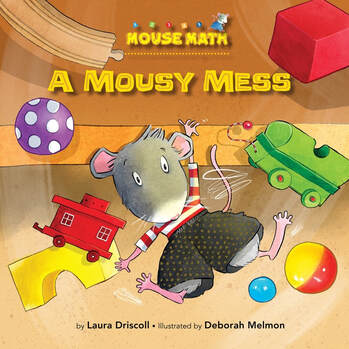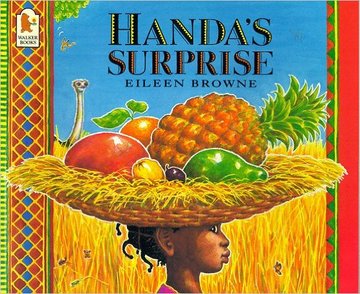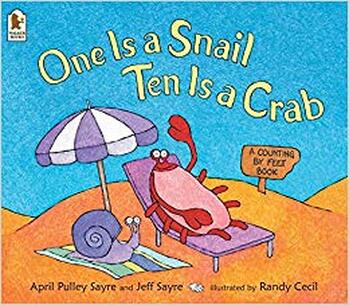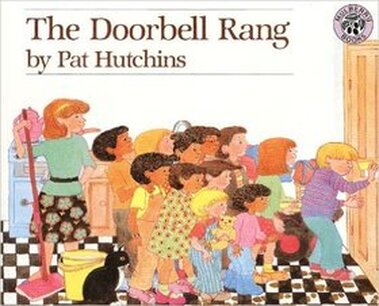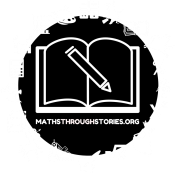The ‘story’ in mathematical story picture books
Defining stories can be difficult. Haven (2007) attributes this difficulty to the fact that stories are “so interwoven into the fabric of our lives and minds that we can’t step far enough away from our storied world to view stories objectively” (p. 10). Nevertheless, attempts to define the concept have been made. For example, Bruner (2002, pp. 16-17), a leading scholar in the field of educational psychology and narrative, argued that a story must involve a cast of characters who have:
recognisable expectations about the ordinary state of the world, the story’s world [...]. A story begins with some breach in expected state of things [...]. Something goes awry, otherwise there’s nothing to tell about. The story concerns efforts to cope [...] with the breach and its consequences. And finally there is an outcome, some sort of resolution.
The way stories involve not only characters but also some sort of a struggle or a problem for the characters to solve lends itself perfectly for mathematics teaching and learning whereby characters find themselves having to use their mathematical knowledge and skill to solve a problem that they face in the story. An example of mathematical stories, defined in this way, include ‘A Mousy Mess’ (Driscoll, 2014). This is a story about a young mouse named Albert, his sister Wanda and their friend Leo who come out to play with a child’s toys before Albert accidentally knocks over the toys out of their different containers. Panicked, they quickly think of different ways to put these toys back to their containers so the people would not know that they had been there. Initially, some toys are sorted by their colour, while others are sorted by their shapes and sizes. Then, Albert finds a big blue round roll-y ball which can go into more than one pile. This prompts the mice to rethink about how best the toys should be sorted and organised. The story encourages young readers to think of other ways the toys can be sorted to help Albert, Wanda and Leo solve the problem.
However, we know from experience that not every story necessarily has to have a struggle or a problem for characters to solve. Take the much-loved ‘Handa’s Surprise’ (Browne, 2014) as an example. Set in a village of the Luo tribe in south-west Kenya, this story is about a girl, Handa, who wants to surprise her friend, Akeyo, with seven delicious fruits. Handa put the fruits in a basket, which itself sits on Handa’s head. Along the journey to see Akeyo, seven different mischievous animals take the fruits one by one from the basket without Handa knowing, until there is nothing left. As she is walking past a tangerine tree, lots of tangerines fall onto the basket on top of Handa’s head (presumably very gently and very quietly!). By the time she sees Akeyo, Handa is herself surprised to see lots of tangerines in the basket instead of the seven different fruits she picked for her friend. In this story, there are certainly characters and a storyline (regardless of how simple it is), but no problems nor struggles for Handa to solve, and yet this story provides a meaningful context for young readers to learn a range of mathematical concepts, such as subtraction.
Stories can thus be defined more liberally as any narratives that simply have a storyline and a character(s). While such characterisation might seem painfully obvious to some, it is crucial to make explicit these key components of a story. This is particularly important as not every picture book has a story. Let’s take, for example, ‘One is a Snail, Ten is a Crab’ (Sayre & Sayre, 2003). While this book is very useful in helping young children learn to count and add through a series of illustrations of people and animals with different number of legs (e.g. “1 is a snail. 2 is a person. 3 is a person and a snail.”), it is not a mathematical story in that it contains no plots or storylines. It is a concept book with some lovely illustrations and some texts. That said, this should not necessarily be interpreted as concept books are inferior to mathematical story picture books. The key message here is simply that it is important that we all have a precise language to communicate with one another on what it is that we are referring to.
Here at MathsThroughStories.org, our focus is on mathematical story picture books, as opposed to concept books. The reason for this is that we strongly believe that the story component has the potential to make mathematics learning experience much more engaging and could be particularly useful for developing students' reading comprehension ability and vocabulary knowledge. I talk a bit more about these two points in my other blog post here.
In summary, mathematical story picture books (or MSPBs) are here referred to as picture books that contain a narrative relating to mathematical ideas or applications.
Types of mathematical story picture books
Story picture books that are used to enhance mathematics teaching and learning can have either an explicit or implicit mathematical focus.
Story picture books with an explicit mathematical focus can be quite easy to spot as they often have mathematical terms in their title as well as recommendations for relevant mathematics learning activities which can usually be found at the end of the book. Many of them are also often found as part of a mathematical story series. For example, ‘A Mousy Mess’ (Driscoll, 2014) that we have come across in the previous section is part of Kane Press’s Mouse Math series (20 titles altogether). Other series include: HarperCollins’s MathStarts series (63 titles), Scholastic’s Hello Math Reader series (40 titles), and Kane Press’s Math Matters series (42 titles). These series are perfect for Early Years and Key Stage 1 children. There are also Charlesbridge’s Math Adventure series (16 titles) and Sir Cumference series (10 titles), which are great for Key Stages 2 and 3 pupils (7-14 years old).
However, stories that are great for mathematical teaching and learning do not have to have an explicit mathematical focus. In addition to ‘Handa’s Surprise’ (Browne, 2014) that we have already seen in the previous section, another example of story picture books with an implicit mathematical focus include ‘The Doorbell Rang’ (Hutchins, 1986). Nowhere in this story picture book did the author claim it to be written for mathematics teaching and learning, and yet the narrative lends itself nicely to mathematical investigations as shown here.
Quite often, the teachers who have what I refer to as mathematical lens, or the ability to identify meaningful opportunities for mathematics teaching and learning in story picture books with an implicit mathematical do not need to rely on explicit mathematical story picture books. Such ability can be particularly useful for teachers working in a class or a school that may not be able to afford to buy new picture books with an explicit mathematical focus. With the mathematical lens on, teachers can use any of their existing story picture books and turn them into a mathematics teaching and learning resource.
Final words
Regardless of how explicit or implicit the mathematical focus is, mathematical story picture books can be a powerful mathematics teaching and learning tool for the reasons outlined in my other blog post.
If you want to explore our 500+ recommendations for mathematical story picture books that can be used to cover 40+ mathematical concepts, please head to our Recommendations section here, and if you want to see examples of how mathematical story picture books can be integrated as part of your mathematics teaching, see some of our examples here.
Please use the Comments section below if you would like to discuss some of the ideas presented in this blog post.
References
Browne, E. (2014). Handa’s Surprise. London, UK: Walker Books.
Bruner, J. (2002). Making stories: Law, literature, life. Cambridge, MA: Harvard University Press.
Driscoll, L. (2014). A Mousy Mess. New York, NY: Kane Press.
Haven, H. (2007). Story proof: The science behind the startling power of story. Westport, CT: Libraries Unlimited.
Hutchins, P. (1986). The Doorbell Rang. New York, NY: Mulberry Books.
Sayre, A. P. & Sayre, J. (2003). One is a Snail, Ten is a Crab. London, UK: Walker Books Ltd.
|
About the author
Dr. Natthapoj Vincent Trakulphadetkrai is a Lecturer in Primary Mathematics Education at the University of Reading’s Institute of Education (UK), and founder of MathsThroughStories.org. His website is Natthapoj.org, and he tweets at @NatthapojVinceT. |
